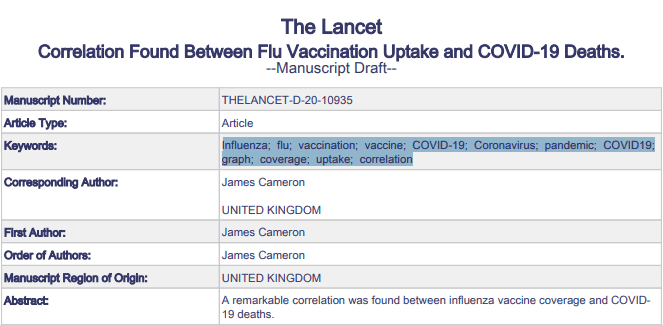
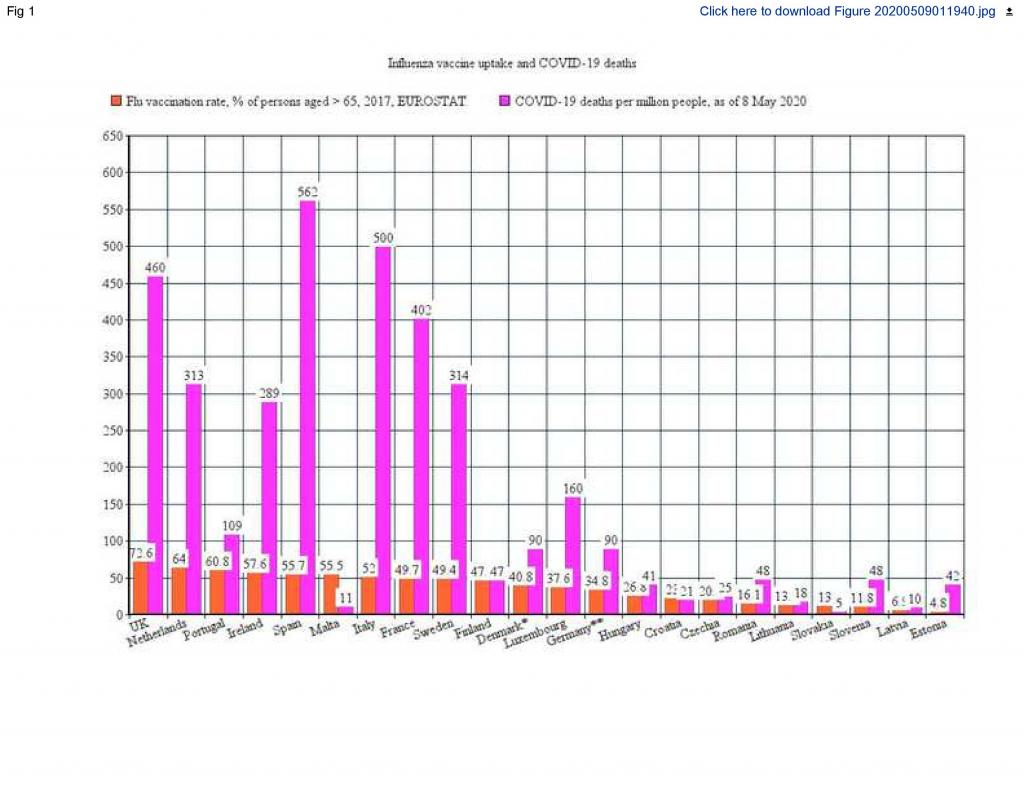
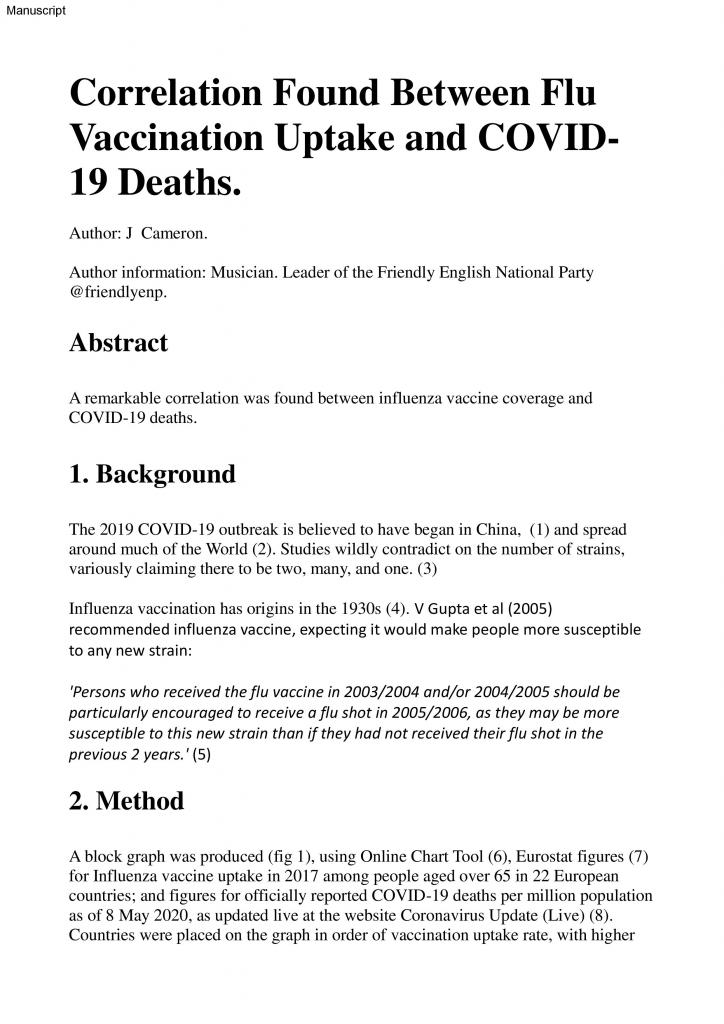
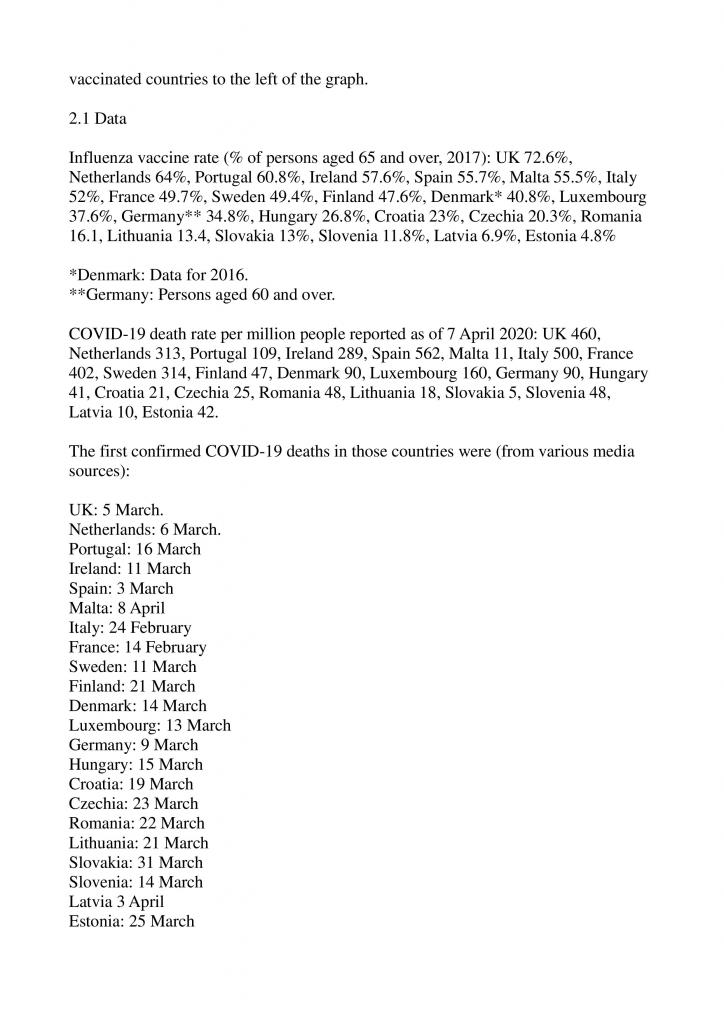
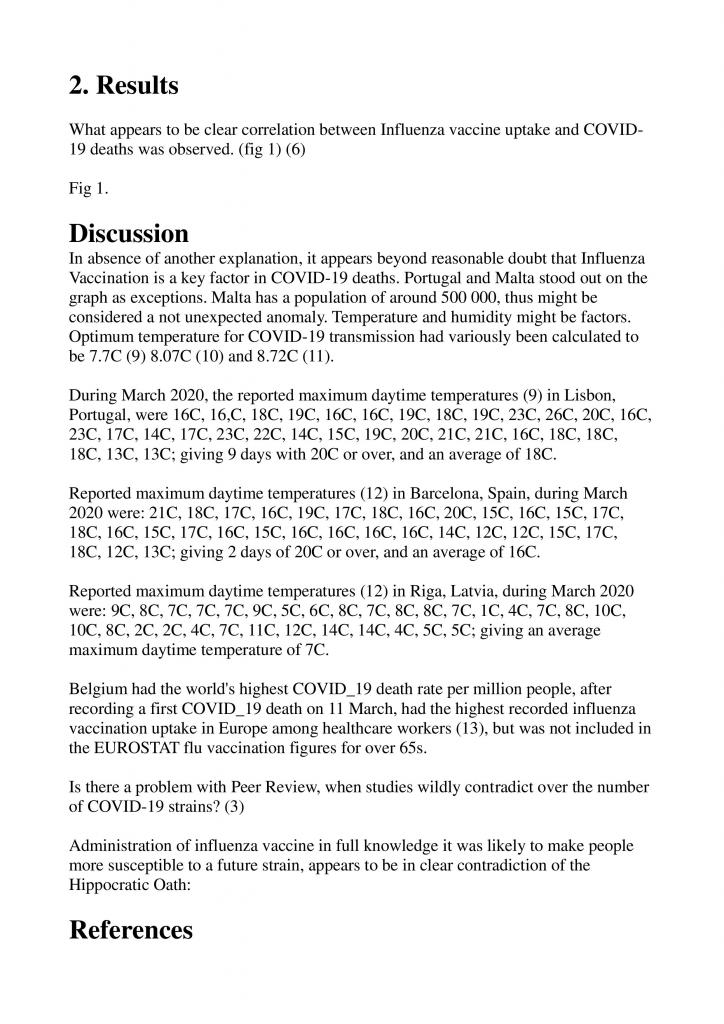
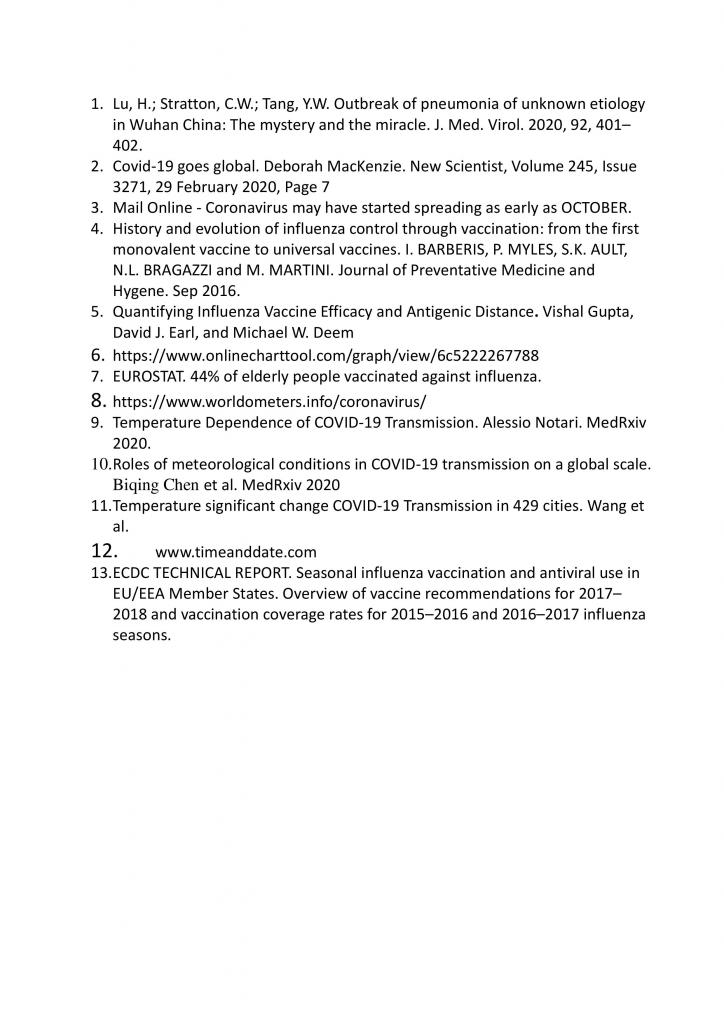
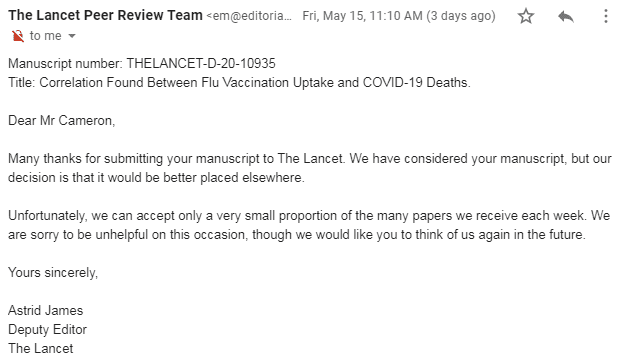
Correlation Found Between Flu Vaccination Uptake and COVID-19 Deaths.
Author: J Cameron.
Author information: Musician. Leader of the Friendly English National Party @friendlyenp.
Abstract
A remarkable correlation was found between influenza vaccine coverage and COVID-19 deaths.
1. Background
The 2019 COVID-19 outbreak is believed to have began in China, (1) and spread around much of the World (2). Studies wildly contradict on the number of strains, variously claiming there to be two, many, and one. (3)
Influenza vaccination has origins in the 1930s (4). V Gupta et al (2005) recommended influenza vaccine, expecting it would make people more susceptible to any new strain:
'Persons who received the flu vaccine in 2003/2004 and/or 2004/2005 should be particularly encouraged to receive a flu shot in 2005/2006, as they may be more susceptible to this new strain than if they had not received their flu shot in the previous 2 years.' (5)
2. Method
A block graph was produced (fig 1), using Online Chart Tool (6), Eurostat figures (7) for Influenza vaccine uptake in 2017 among people aged over 65 in 22 European countries; and figures for officially reported COVID-19 deaths per million population as of 8 May 2020, as updated live at the website Coronavirus Update (Live) (8). Countries were placed on the graph in order of vaccination uptake rate, with higher vaccinated countries to the left of the graph.
2.1 Data
Influenza vaccine rate (% of persons aged 65 and over, 2017): UK 72.6%, Netherlands 64%, Portugal 60.8%, Ireland 57.6%, Spain 55.7%, Malta 55.5%, Italy 52%, France 49.7%, Sweden 49.4%, Finland 47.6%, Denmark* 40.8%, Luxembourg 37.6%, Germany** 34.8%, Hungary 26.8%, Croatia 23%, Czechia 20.3%, Romania 16.1, Lithuania 13.4, Slovakia 13%, Slovenia 11.8%, Latvia 6.9%, Estonia 4.8%
*Denmark: Data for 2016.
**Germany: Persons aged 60 and over.
COVID-19 death rate per million people reported as of 7 April 2020: UK 460, Netherlands 313, Portugal 109, Ireland 289, Spain 562, Malta 11, Italy 500, France 402, Sweden 314, Finland 47, Denmark 90, Luxembourg 160, Germany 90, Hungary 41, Croatia 21, Czechia 25, Romania 48, Lithuania 18, Slovakia 5, Slovenia 48, Latvia 10, Estonia 42.
The first confirmed COVID-19 deaths in those countries were (from various media sources):
UK: 5 March.
Netherlands: 6 March.
Portugal: 16 March
Ireland: 11 March
Spain: 3 March
Malta: 8 April
Italy: 24 February
France: 14 February
Sweden: 11 March
Finland: 21 March
Denmark: 14 March
Luxembourg: 13 March
Germany: 9 March
Hungary: 15 March
Croatia: 19 March
Czechia: 23 March
Romania: 22 March
Lithuania: 21 March
Slovakia: 31 March
Slovenia: 14 March
Latvia 3 April
Estonia: 25 March
2. Results
What appears to be clear correlation between Influenza vaccine uptake and COVID-19 deaths was observed. (fig 1) (6)
Fig 1.
Discussion
In absence of another explanation, it appears beyond reasonable doubt that Influenza Vaccination is a key factor in COVID-19 deaths. Portugal and Malta stood out on the graph as exceptions. Malta has a population of around 500 000, thus might be considered a not unexpected anomaly. Temperature and humidity might be factors. Optimum temperature for COVID-19 transmission had variously been calculated to be 7.7C (9) 8.07C (10) and 8.72C (11).
During March 2020, the reported maximum daytime temperatures (9) in Lisbon, Portugal, were 16C, 16,C, 18C, 19C, 16C, 16C, 19C, 18C, 19C, 23C, 26C, 20C, 16C, 23C, 17C, 14C, 17C, 23C, 22C, 14C, 15C, 19C, 20C, 21C, 21C, 16C, 18C, 18C, 18C, 13C, 13C; giving 9 days with 20C or over, and an average of 18C.
Reported maximum daytime temperatures (12) in Barcelona, Spain, during March 2020 were: 21C, 18C, 17C, 16C, 19C, 17C, 18C, 16C, 20C, 15C, 16C, 15C, 17C, 18C, 16C, 15C, 17C, 16C, 15C, 16C, 16C, 16C, 16C, 14C, 12C, 12C, 15C, 17C, 18C, 12C, 13C; giving 2 days of 20C or over, and an average of 16C.
Reported maximum daytime temperatures (12) in Riga, Latvia, during March 2020 were: 9C, 8C, 7C, 7C, 7C, 9C, 5C, 6C, 8C, 7C, 8C, 8C, 7C, 1C, 4C, 7C, 8C, 10C, 10C, 8C, 2C, 2C, 4C, 7C, 11C, 12C, 14C, 14C, 4C, 5C, 5C; giving an average maximum daytime temperature of 7C.
Belgium had the world's highest COVID_19 death rate per million people, after recording a first COVID_19 death on 11 March, had the highest recorded influenza vaccination uptake in Europe among healthcare workers (13), but was not included in the EUROSTAT flu vaccination figures for over 65s.
Is there a problem with Peer Review, when studies wildly contradict over the number of COVID-19 strains? (3)
Administration of influenza vaccine in full knowledge it was likely to make people more susceptible to a future strain, appears to be in clear contradiction of the Hippocratic Oath:
References